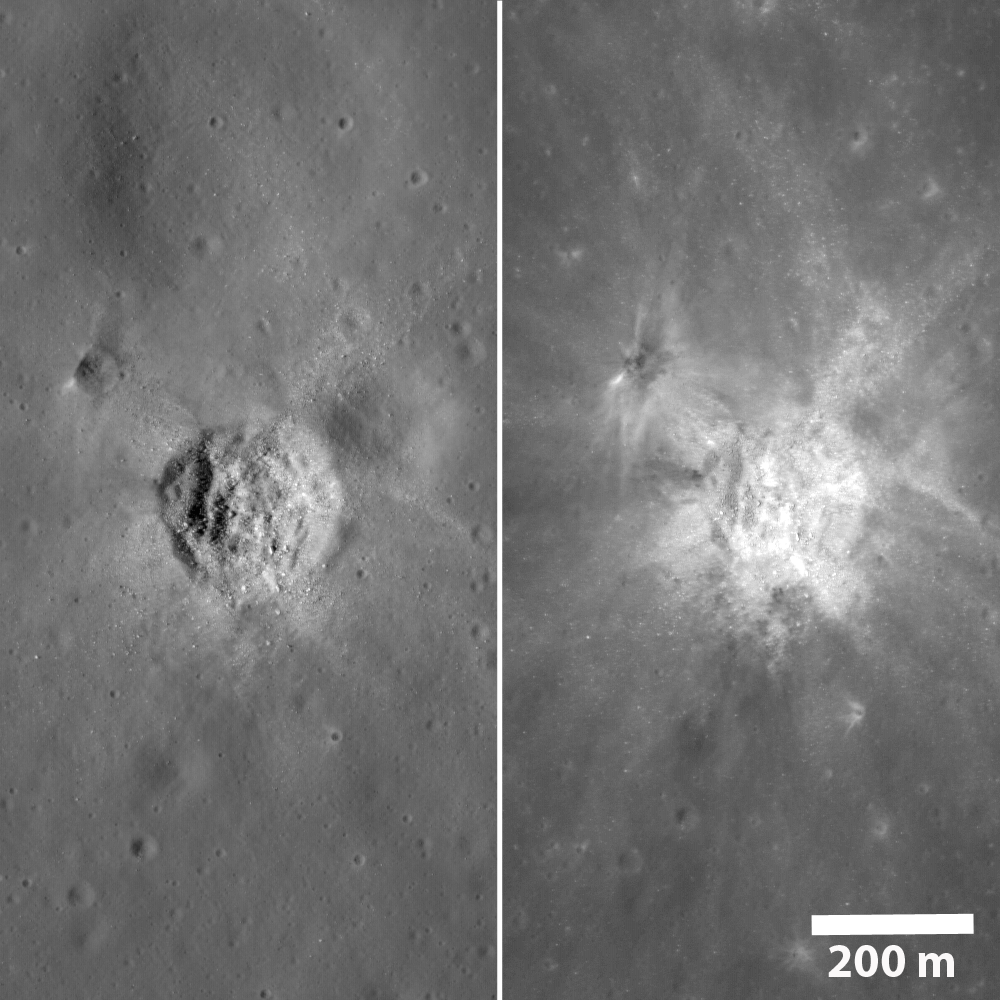
These two images, subareas of M104670019L (incidence angle 50.2°) and M107035386L (incidence angle 24.6°) illustrate the effects of illumination angle on recognition of different aspects of the lunar surface. Note that incidence angle is measured from the surface normal, so at noon the incidence angle is 0° and at sunset 90°. Each scene is about 550 meters wide and 1.1 km tall.
On the left, the morphology of this small mare crater (200 m diameter) is clear, whereas in the image on the right differences in brightness (reflectance or albedo) are highlighted defining ejecta patterns. Explorers might prefer the lower-Sun image for landing or planning traverses, while the higher-Sun image guides the eye to ejecta. One of the strengths of the LRO mission is that it passes over the same region numerous times, and each time the Sun angle is different allowing LROC to build up an image set over a wide range of angles.
This crater also illustrates the influence of pre-existing regolith (soil) structure on crater morphology. When the regolith is relatively thin, over more-or-less intact bedrock, small craters often do not have a simple bowl shape. This crater is filled with rubble and there are numerous blocks up to 10 m in diameter scattered around the rim and the interior, indicating that bedrock was excavated during the impact. In cases where impacts occur in a thick regolith, the crater does not excavate blocky rocks but rather fine-grained soil, resulting a nicely defined bowl shape.
Browse the lower-Sun NAC image!
Browse the higher-Sun NAC image!
Published by Jeff Plescia on 20 October 2009